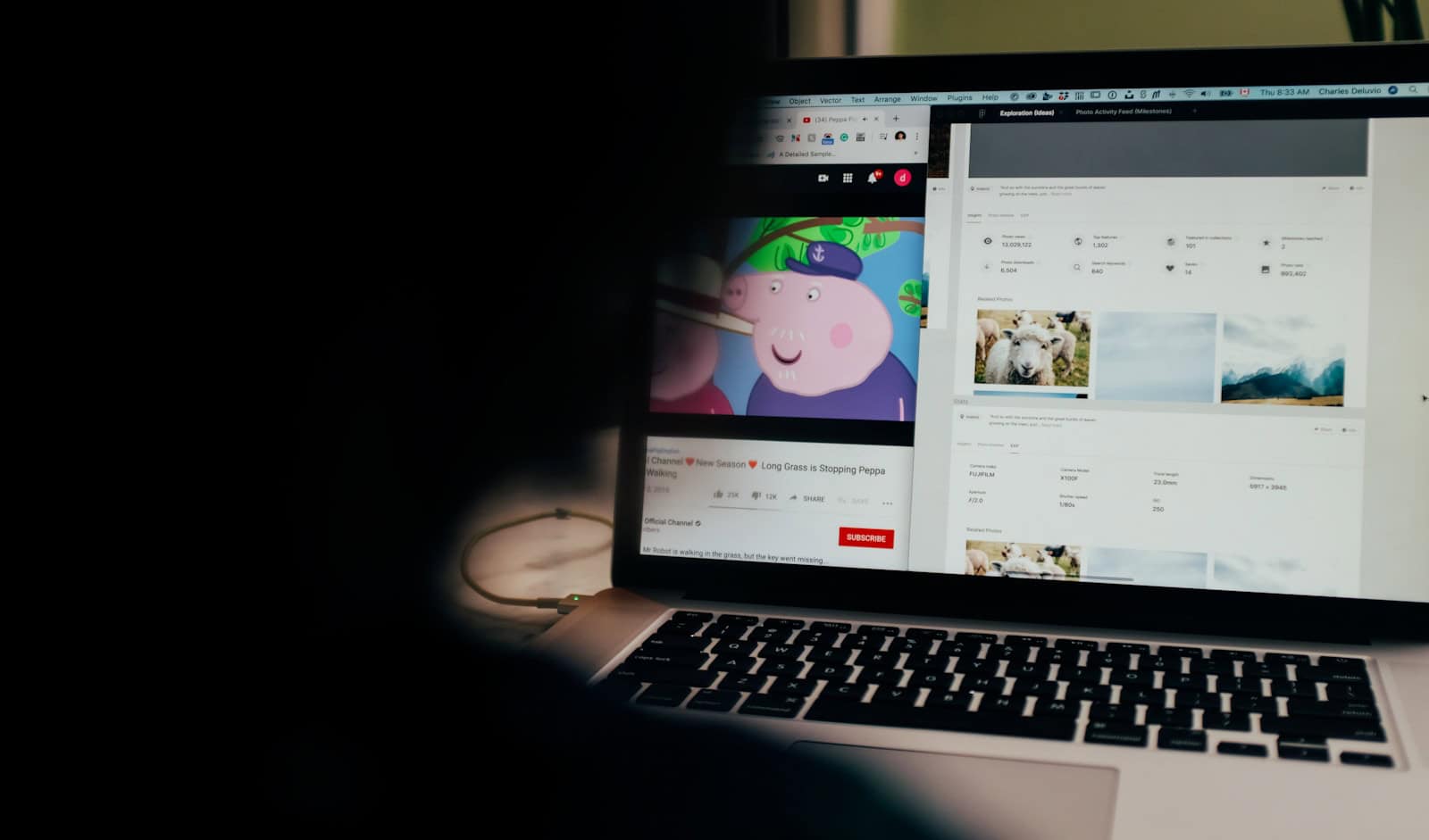Adding symbols and emojis to YouTube titles and descriptions can make your content stand out and attract more viewers. You can easily insert emojis into YouTube titles and descriptions by using keyboard shortcuts or copying and pasting from emoji websites. These eye-catching elements help convey emotions and ideas quickly, potentially boosting engagement with your videos.
YouTube creators often use emojis to enhance their video titles and descriptions. This practice can make content more visually appealing and help communicate the video’s theme or tone at a glance. While emojis can be effective, it’s important to use them sparingly and relevantly to avoid cluttering your content.

Sprucing Up Your YouTube Content
Symbols and emojis can make your YouTube titles and descriptions more eye-catching. They can help your videos stand out in search results and attract viewers. Here’s how to use them effectively:
Finding Symbols and Emojis
- Use your device’s built-in tools: Most devices have built-in emoji keyboards or character maps. You can access these to copy and paste symbols and emojis directly into your YouTube text.
- Use a website: Many websites offer a wide variety of symbols and emojis for you to copy and paste. Some popular options include GetEmoji.com and Piliapp.com.
Adding Symbols and Emojis to Titles and Descriptions
- Find the symbol or emoji you want to use.
- Copy it to your clipboard.
- Go to your YouTube video’s edit screen.
- Paste the symbol or emoji into your title or description.
Tips for Using Symbols and Emojis Effectively
- Use relevant symbols and emojis: Choose symbols and emojis that relate to your video’s content. This will help viewers understand what your video is about.
- Don’t overdo it: Using too many symbols or emojis can make your titles and descriptions look cluttered and unprofessional. Stick to a few that add value and visual appeal.
- Check for compatibility: Not all symbols and emojis will display correctly on all devices. Test your titles and descriptions on different devices to ensure they look as intended.
- Consider your audience: Think about who your target audience is and what kind of symbols and emojis they might appreciate.
- Use symbols and emojis to highlight important information: You can use symbols and emojis to draw attention to specific keywords or calls to action in your descriptions.
Examples of How to Use Symbols and Emojis
- Use arrows to point to important information: “➡️ Subscribe for more videos!”
- Use emojis to represent your video’s content: “🐶 Dog Training Tips for Beginners”
- Use symbols to create visual separators: “⭐ About this video ⭐”
| Symbol/Emoji | Purpose | Example |
|---|---|---|
| ➡️ | Direct viewers’ attention | ➡️ Subscribe for more! |
| ❗ | Emphasize important points | ❗ Limited time offer! |
| 👍 | Encourage likes | 👍 If you enjoyed this video… |
| 😄 | Convey emotion | 😄 Funny cat compilation |
| 🎵 | Indicate music-related content | 🎵 New music video release |
| 🔽 | Point to links in the description | 🔽 Download link below |
Optimizing Your YouTube Thumbnails
Thumbnails are crucial for attracting viewers to your videos. They are the first thing people see when browsing YouTube, so making them visually appealing and informative is essential. Here are some tips for creating effective thumbnails:
- Use high-quality images: Your thumbnail image should be clear, well-lit, and in focus.
- Include relevant text: Add text to your thumbnail that clearly describes your video’s content.
- Use bright colors: Bright colors can help your thumbnail stand out in search results.
- Maintain consistency: Use a consistent style for your thumbnails across all your videos. This will help viewers recognize your content.
- Consider using a custom thumbnail: YouTube allows you to upload a custom thumbnail image for your videos. This gives you more control over how your videos appear in search results.
By following these tips, you can create thumbnails that attract viewers and help your videos succeed on YouTube.
Key Takeaways
- Emojis in YouTube titles and descriptions can increase video visibility and engagement
- Keyboard shortcuts or emoji websites allow easy insertion of symbols and emojis
- Use emojis strategically to enhance, not overwhelm, your YouTube content
Understanding the Role of Emojis in YouTube Video Titles and Descriptions
Emojis play a crucial role in YouTube video titles and descriptions. These small icons can boost engagement, improve visibility, and help creators connect with their audience more effectively.
Enhancing Click-Through Rates with Visual Elements
Emojis in YouTube titles and descriptions can significantly increase click-through rates. These visual elements catch viewers’ eyes as they scroll through search results or recommended videos. Adding emojis to titles and descriptions makes content more eye-catching and helps it stand out from competitors.
Creators can use emojis to:
- Highlight key points in the title
- Convey the video’s mood or tone
- Break up text in longer descriptions
Choosing relevant emojis is crucial. For example, a cooking video might use a 🍳 or 🥘 emoji, while a travel vlog could incorporate a ✈️ or 🏖️.
SEO Best Practices for YouTube Content
Emojis can enhance SEO for YouTube videos when used strategically. While emojis don’t directly impact search rankings, they can improve user engagement metrics, which in turn influence a video’s visibility.
Best practices for using emojis in YouTube SEO:
- Use emojis sparingly in titles (1-2 maximum)
- Place emojis at the beginning or end of titles
- Include relevant emojis in video descriptions
- Avoid overusing emojis, which can appear spammy
It’s important to note that emojis should complement, not replace, well-crafted titles and descriptions with relevant keywords.
Catering to a Diverse Audience on YouTube
Emojis help creators connect with a diverse, global audience on YouTube. These universal symbols can break language barriers and convey emotions or concepts quickly.
Benefits of using emojis for diverse audiences:
- Improved accessibility for non-native speakers
- Enhanced emotional connection with viewers
- Simplified communication of complex ideas
Creators should consider cultural differences when selecting emojis. Some symbols may have different meanings in various cultures. It’s essential to research and choose emojis that resonate positively with the target audience.
How to Add Emojis and Symbols to YouTube Titles and Descriptions
Adding emojis and symbols to YouTube titles and descriptions can make content more eye-catching and increase click-through rates. The process varies depending on the device used and requires strategic placement for maximum impact.
Using the Emoji Keyboard on Different Devices
On Windows computers, users can press the Windows key + period (.) to open the emoji keyboard. For Mac users, the shortcut is Command + Control + Space. Android and iOS devices typically have emoji keyboards built into their default keyboards.
For YouTube on mobile devices, users can simply tap the text field and use the emoji keyboard that appears. On desktops, creators can copy and paste emojis from websites like SYMBL if they prefer not to use keyboard shortcuts.
Some YouTubers use browser extensions or third-party apps to access a wider range of symbols and emojis. These tools often provide categories and search functions for quick emoji insertion.
Formatting and Placement Strategies for Maximum Impact
Emojis work best when used sparingly and strategically in titles and descriptions. Placing an emoji at the beginning or end of a title can draw attention without cluttering the text. In descriptions, emojis can highlight key points or separate sections.
Here’s a simple guide for effective emoji use:
- Use relevant emojis that match the video content
- Limit to 1-2 emojis in titles to avoid overwhelming viewers
- In descriptions, use emojis as bullet points or section dividers
Adding emojis to YouTube titles and descriptions can increase engagement, but overuse may look unprofessional. Creators should test different placements and emoji combinations to find what works best for their audience and content style.





